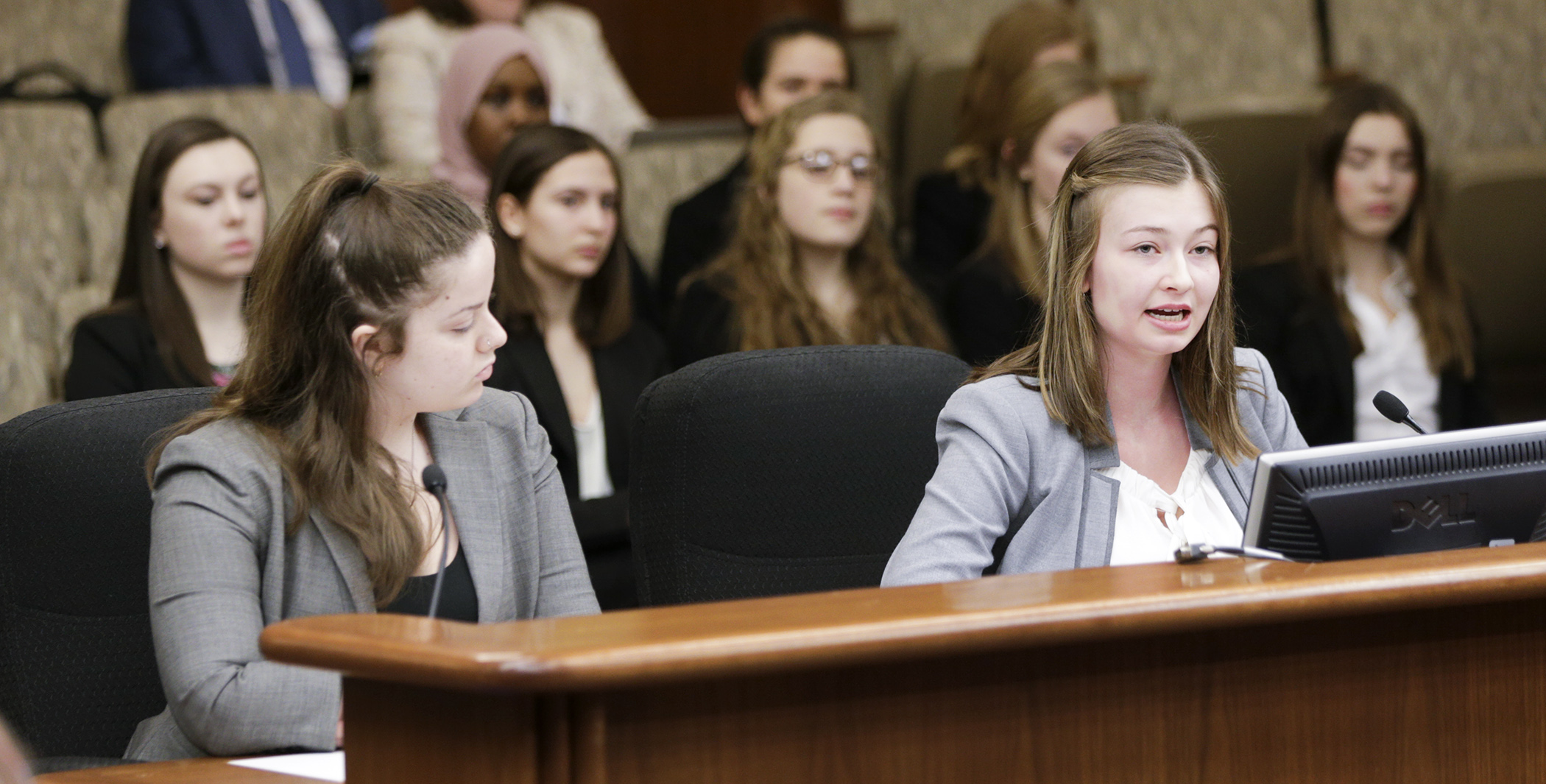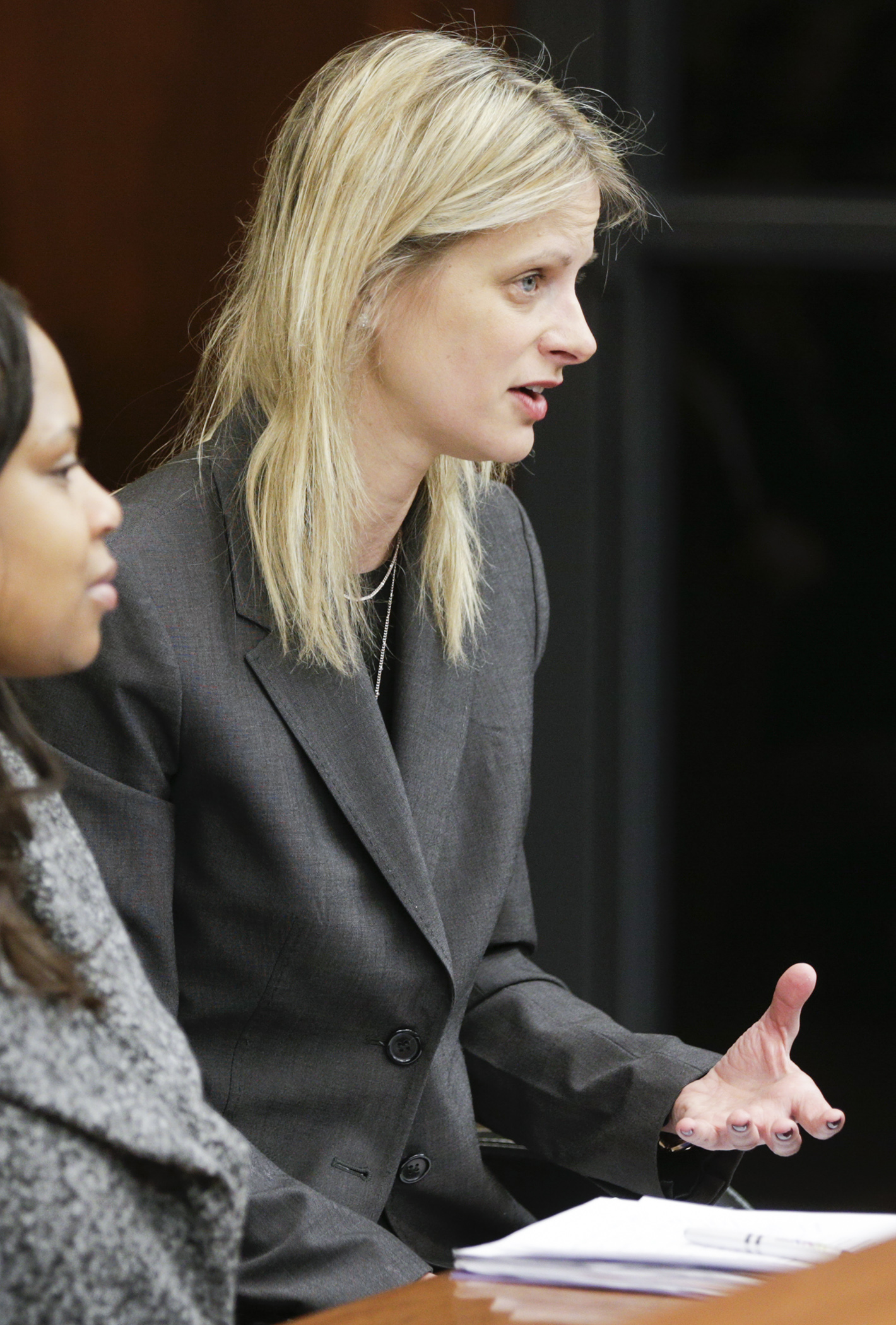Education committee approves measure aimed at preventing sex trafficking

Lawmakers are continuing with a bipartisan push to stop the sexual exploitation and trafficking in Minnesota through education.
Sponsored by Rep. Randy Jessup (R-Shoreview), HF2768 would allow school districts to include sexual exploitation prevention instruction in a health curriculum.
The House Education Innovation Policy Committee laid the bill over Tuesday for possible omnibus bill inclusion. Its companion, SF2465, sponsored by Sen. Paul Anderson (R-Plymouth), awaits action by the Senate E-12 Policy Committee.
The bill is a result of a grassroots effort by Girls United MN, founded by junior Jessica Melnik and a group of girls from Hopkins High School. Over the last several months, they have engaged school administrators, multiple city councils, state and national legislators, as well as Gov. Mark Dayton.
As a result they’ve seen implementation of an in-school field trip featuring presentations from survivors. They’ve also successfully petitioned several cities and the State of Minnesota to issue “Not For Sale Day” proclamations.
Now, in partnership with The Link and other local non-profits, the group is supporting HF2768, explaining that it is an essential step in the prevention and eradication of sexual exploitation and trafficking.
“Public school health curriculums do not suggest or mandate any form of sex trafficking education as of right now, but how do we know where to turn for help, if we don’t know where to turn for it?” Melnik said. “We see this bill as a first, common-sense step toward preventing children and adults from falling victim to sexual exploitation and, most importantly, curbing the demand for these horrific acts in Minnesota.”
WATCH Full video of the committee hearing on the bill
Recently, a light has been shown on the issue of sexual exploitation and trafficking in Minnesota, due to awareness campaigns sponsored by the NFL in conjunction with Super Bowl 52. The issue’s prevalence across the state has been a surprise to many.
A memo provided to the committee by Rhoda Mhiripiri-Reed, superintendent of Hopkins Public Schools, cited FBI information identifying Minnesota as the 13th-largest market for human trafficking. There are between 8,000 and 14,000 victims annually, and $9 billion is generated by this business in the state.
 Beth Holger-Ambrose, executive director of The Link, tells about her group’s collaboration with Girls United MN. Photo by Paul Battaglia
Beth Holger-Ambrose, executive director of The Link, tells about her group’s collaboration with Girls United MN. Photo by Paul BattagliaQuisha Stewart, Safe Harbor Division director for The Link, noted that while there are certain characteristics that make an individual more susceptible to being exploited, anyone can fall victim.
“I’m totally excited about Girls United and the young women who are eager and so professional and so engaged in this situation because oftentimes when people hear about exploitation they have a specific type of victim in mind,” Stewart said. “This partnership with Girls United, it supports that notion that anyone can be exploited, any kid can be exploited.”
Over the last several years, lawmakers had enacted laws aimed at combating this issue, including Erin’s Law in 2017, which encourages school districts to include sexual abuse prevention curriculum. In 2011 the Safe Harbor Law was enacted, which decriminalized youth engaged in prostitution and helped them connect with supportive services.
“Students deserve to know about the resources that are available to them,” Melnik said. “We could and should be capitalizing on our Safe Harbor resources. This law was passed to protect the children of Minnesota and I hope as a body we are able to move forward with this.”
Jessup said the bill would build on and expand the efforts that have already been made by legislators.
Rep. Carlos Mariani (DFL-St. Paul) questioned whether the permissive language, allowing school districts the option to adopt the curriculum, should instead be mandated. He also wants to know how the curriculums success would be measured.
“I would encourage us to at least take the next two to three years as kind of a process to say, ‘How is this legislation having an impact in our schools and do we need to do more?’” Jessup said. “Let us use the next two to three years to determine the answers to those questions.”
Related Articles
Search Session Daily
Advanced Search OptionsPriority Dailies
Ways and Means Committee OKs proposed $512 million supplemental budget on party-line vote
By Mike Cook Meeting more needs or fiscal irresponsibility is one way to sum up the differences among the two parties on a supplemental spending package a year after a $72 billion state budg...
Meeting more needs or fiscal irresponsibility is one way to sum up the differences among the two parties on a supplemental spending package a year after a $72 billion state budg...
Minnesota’s projected budget surplus balloons to $3.7 billion, but fiscal pressure still looms
By Rob Hubbard Just as Minnesota has experienced a warmer winter than usual, so has the state’s budget outlook warmed over the past few months.
On Thursday, Minnesota Management and Budget...
Just as Minnesota has experienced a warmer winter than usual, so has the state’s budget outlook warmed over the past few months.
On Thursday, Minnesota Management and Budget...